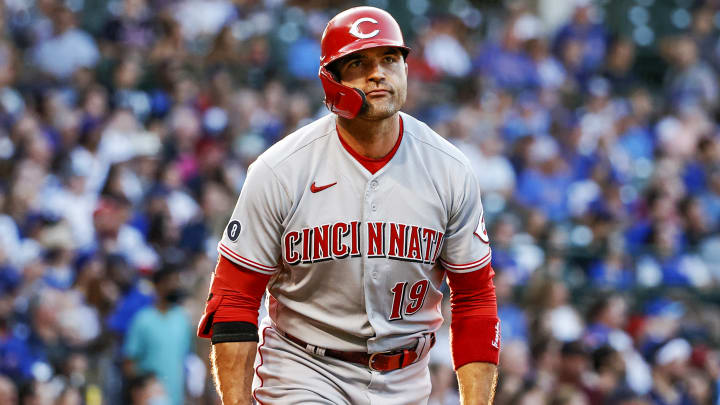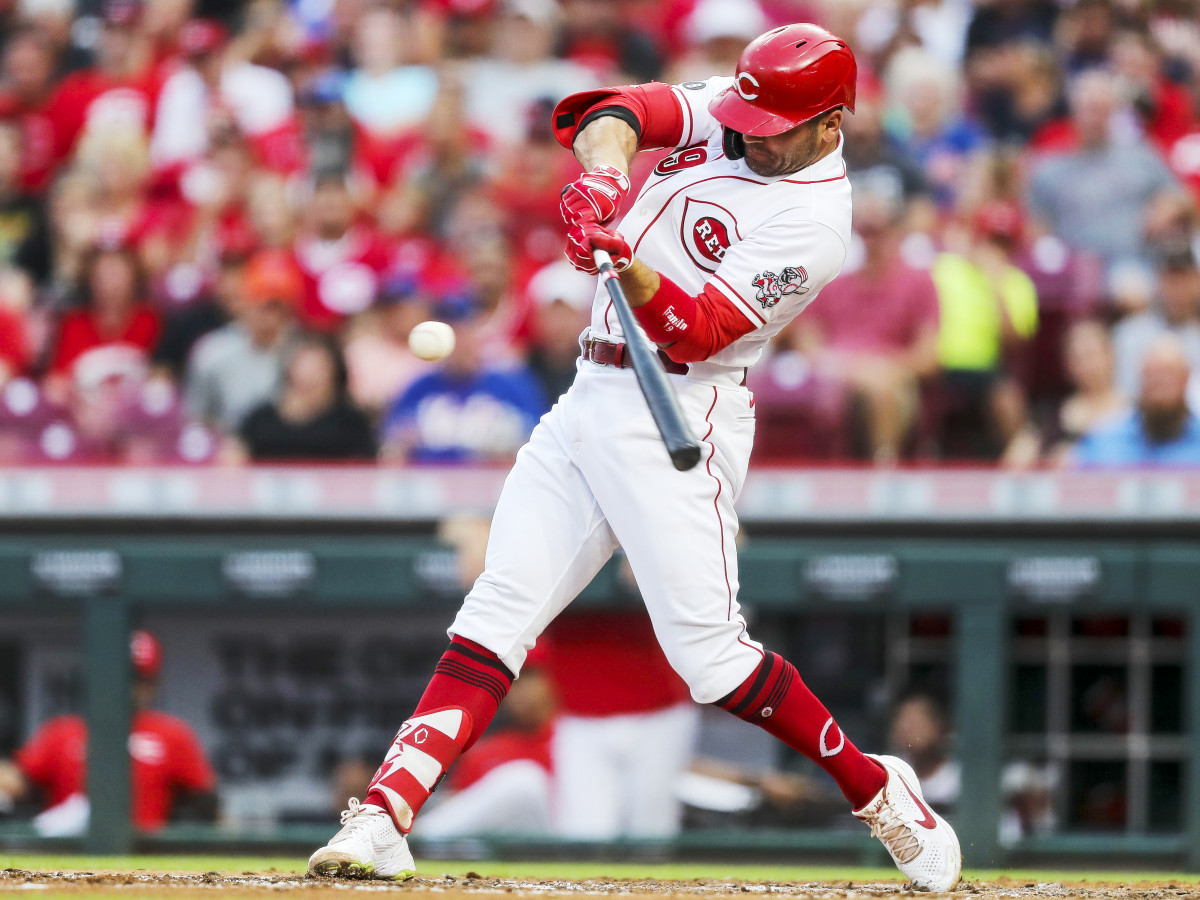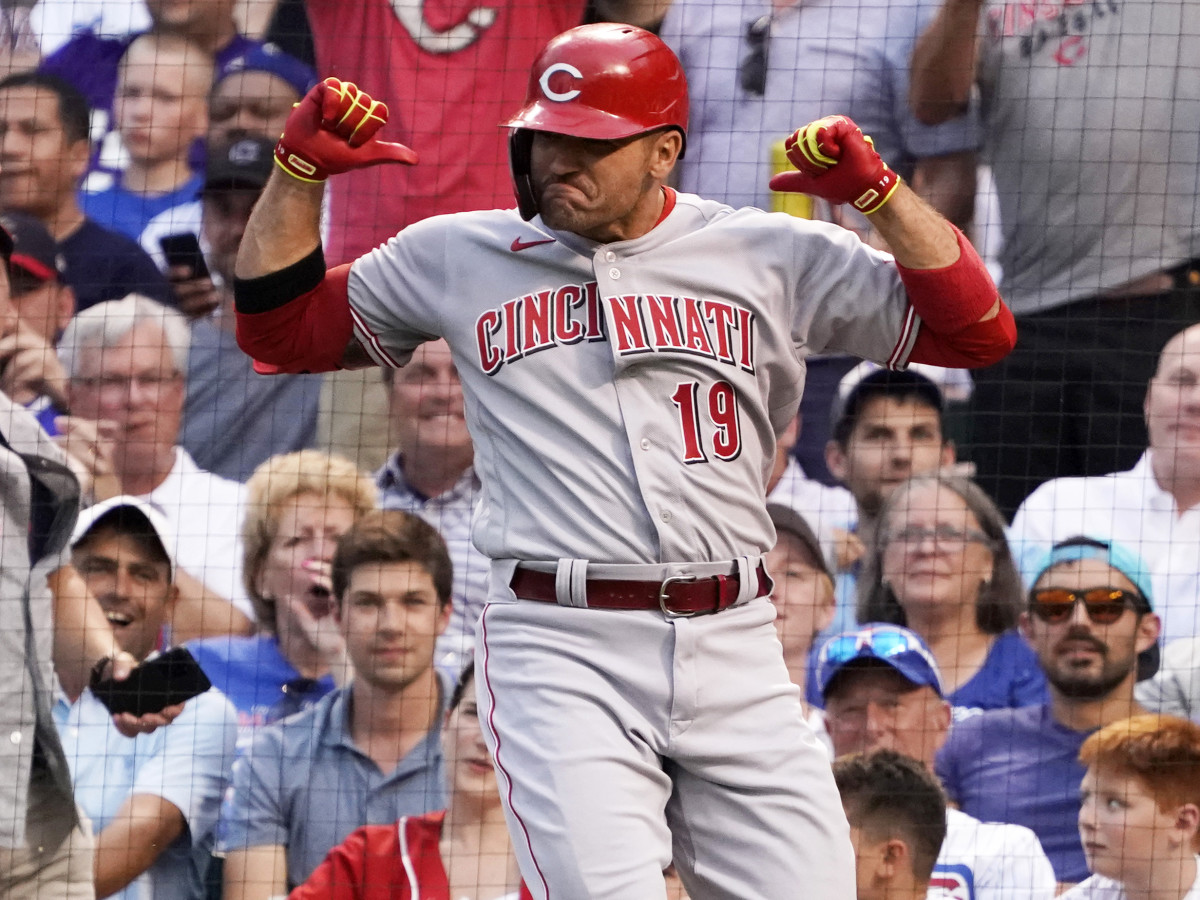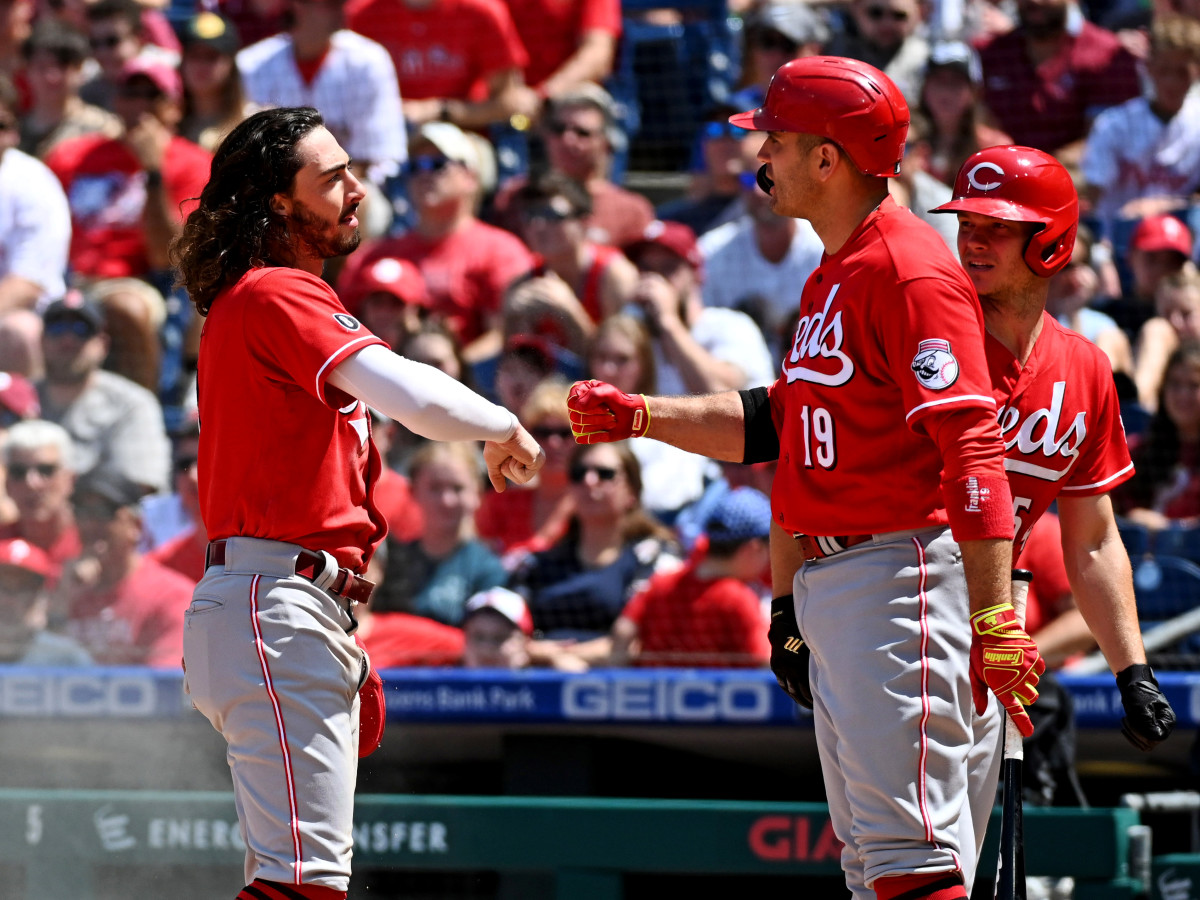The Revival of Joey Votto

Welcome to The Opener, where every weekday morning you’ll get a fresh, topical column to start your day from one of SI.com’s MLB writers.
Baseball seasons can meander like a long river. They can flow, bend, rise and fall with a subtlety that does not always make obvious a change of direction. Rare is the time when you can say with certainty “that day … that one day … is when it all changed.”
For Reds first baseman Joey Votto, such a rare day was Aug. 25, 2020. Votto batted four times that day in Milwaukee and struck out all four times. Not since he was a rookie in 2008 did Votto go 0-for-4 with four punchouts.
His batting average was down to .191. Since 2018, Votto, who had been a .313 hitter and .541 slugger until then, was hitting .266 and slugging just .409 over more than 1,000 at bats. At 36, his career and power appeared to be winding down.

That’s when the river of his career took a head-snapping turn. Votto sat out the next three days. He repaired to the batting cage. He did not just tweak his setup and approach at the plate. He overhauled it.
Velocity, the high fastball, spin rates, more power arms—pitching had changed quickly. Votto decided he needed to change. He “modernized” his hitting approach. He borrowed from watching successful young hitters who had grown up in this high-velocity, high-spin environment and had deployed technology to help combat the changes.
A more erect posture helps get the bat on top of high fastballs, rather than from a crouched position. The palm of the top hand rides through the baseball upward to create backspin and lift, rather than the old way of turning the palm as the wrist rolls, which is fine as long as you want to hit ground balls, which nobody does anymore.
On Aug. 29, fresh out of the garage, Votto stepped in the batter’s box against Alec Mills of the Cubs for the first at bat of the rest of his career. Mills threw a 1–1 sinker on the outer third. Votto hooked it into the right-field seats. Home run.
Since that day, Votto, who turns 38 next month, has outslugged every regular in baseball except four youngsters: Fernando Tatis Jr., Shohei Ohtani, Ronald Acuña Jr. and Vladimir Guerrero Jr. This year he is second in the NL in home runs despite missing a month. He recently hit 14 home runs in 19 games. He has slugged his way into the Most Valuable Player Award discussion. He is two hits short of 2,000.
And he might just be having more fun playing baseball than ever before in his 15-year career.

“It's one thing if a guy gets hot and he’s having personal success and all of a sudden he’s in a good mood,” says Reds manager David Bell. “It happens a lot. But in Joey’s case it’s really important that it happened even before he was hitting [like this]. The way he’s hitting and the way he’s playing and the way he’s moving is a byproduct of the way he is enjoying the game and his teammates and where we are as a team. All of that came first. I think it freed him up and he was kind of embracing that. And the hitting just followed.”
Bell and Votto share a bond over the streaming show Ted Lasso, a fish-out-of-water comedy about a U.S. soccer coach in the U.K. Votto calls Bell “Led Tasso.” Bell first called Votto “Roy,” but when that character retired from the team, now it’s “Jamie.” Last Friday as Votto walked to the on-deck circle in Philadelphia, he joked with Bell about the show, reminding him how the episodes drop on Fridays. Then Votto promptly whacked a Zack Wheeler slider into the bullpen for home run No. 26.
Votto will mimic “Jamie” mannerisms after home runs. In Chicago, on his way to first base, he started singing a nonsense tune from the show as a home run was still leaving the yard.
“It’s meant a lot to me because it was my brother’s show, and I never watched it until after he passed away,” says Bell. Mike Bell, a coach with the Twins and a beloved member of one of baseball’s great generational families, died in March at age 46 from cancer. “And then I got it into it and just to have that to kind of bond. With Joey in particular it’s been a lot of fun. There’s a lot of jokes.”
Lasso keeps a sign about his office that reads, “Believe.”
“We keep saying it as a joke—‘Believe,’ that’s Ted’s thing—but also that’s a good positive reinforcement, too,” Bell says. “We kind of believe what we’re talking about, too. Not only just a joke.”
The Reds, just two games in the loss column behind San Diego for the second wild card, are playing their best baseball of the season. Jonathan India has locked down the leadoff spot while threatening to break the 108-year-old record of Jimmy Viox for the best on-base percentage by a rookie second baseman (.399). Trade additions Luis Cessa, Justin Wilson and Mychal Givens and the return to health of Lucas Sims and Michael Lorenzen have fixed what had been a shaky bullpen. And Votto, in what is a renaissance season for a renaissance hitter, is leading them in every imaginable way.

It is difficult and labor-intensive to overhaul a swing. It is extraordinarily hard to try to do so during the season. Curtis Granderson did it in 2010 under the guidance of hitting coach Kevin Long, but only after Long was reluctant to embark on such a project in-season. That Votto has pulled it off and done it this well is a testament to his superb hitting skills and knowledge.
The term “launch angle” has been so poorly applied that it has become a pejorative. Hitters don’t chase launch angle; it’s a measurement of how the ball comes off the bat. What they chase is developing the best bat path to combat the power pitching game today. Be short to the ball and long through it. Develop a rhythm with the hands to create the energy to meet 95-plus mph. Keep the hands above the high fastball by entering the zone higher. Extend through and up, matching the plane of the pitch and creating backspin. The modern hitter must solve problems other generations did not because of the quality and quantity of pitching today.
Votto made all those changes. Watch him take practice swings when he steps out of the box, and you can see his top palm pointing up and the bat path matching the pitch path. When it’s time to hit, he stands tall in the box. He pumps his hands as soon as the pitcher starts his delivery. As the pitch is released, Votto has lifted his front leg so that the knee is waist high. The pumping of the hands and lifting of the leg have created stored energy. It gets unleashed as the front foot lands. In order, the hips, torso and hands unwind in a synchronized-if-violent ballet. The hands finish high. The ball is airborne.
“He would have figured it out anyway,” Bell says. “The timing of it was such that he was already well on his way to making an adjustment. But the biggest thing is it’s been so much fun to be around a great player at this point in his career that has found a way to yes, make adjustments and have an incredible run and season, but also the way he has enjoyed it, the way he has embraced it, and enjoyed being on this team with his teammates. … I think all of that really started before he was hitting like this, and the hitting followed. So there’s a lot to be said for that.”
It would not be fair to say Votto is better than ever. The bar is high. He won the MVP in 2010 when he slugged .600. He has led the league in walks five times. He will join Johnny Bench as the only Reds with 2,000 hits and 300 homers. He will be one of only 30 players with 2,000 hits who gets on base more than 40% of the time.
What is fair and obvious is that Votto successfully changed his game at age 37. He has a new profile as a hitter. He has become the modern hitter he wanted to be—a slugger who hits the ball harder and in the air more and is willing to accept more outs and swings and misses as the cost of doing damage. Check out his new profile:
Votto 2021 Hitting Profile
Home Run Rate | 7.1% | Career High |
|---|---|---|
Flyball Rate | 34.8% | Career High |
Strikeout Rate | 23.8% | Career High |
Pull Rate | 35.6% | Career High |
Exit Velocity | 93.1 mph | Career High (Since 2015) |
Contact Rate | 70.5% | Career Low |
You knew this was a new look for Votto when, on Aug. 4, he popped out to first base for only the second time in his career. (The other time was in 2019.) He has popped out to the infield three times this month—as many times as he did in entire seasons of 2012 and 2013. It’s a small price.
His career has turned sharply, and for the better. It all began with a four-strikeout game and the willingness to make massive changes on the spot. Sometimes change is as obvious as one day.
And in one word: believe.
More MLB Coverage:
• 'Field of Dreams' Game Delivers Scenes of Beauty, Drama
• Better Late: Old-School Brian Snitker Is Thriving in Today's MLB
• Crying Foul Over Ballpark Injuries
• Mike Trout's Injuries Symbolize Baseball's Most Pressing Issue
